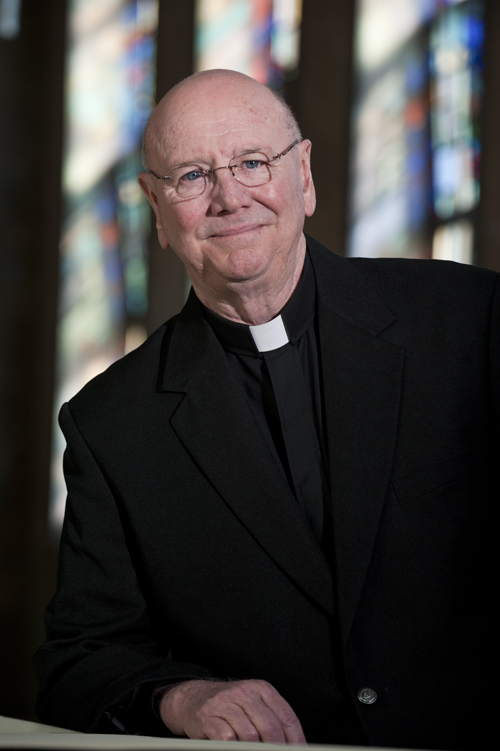
By
America’s 65 million Catholics are adjusting to changes in the familiar language of the liturgy of the Mass for the first time in nearly 40 years. Last Sunday, the Catholic Church introduced a new English-language translation of the Roman Missal.
The new translation, the first since the Vatican-sanctioned switch from Latin to English was completed in 1973, may take some getting used to for both parishioners and priests, said School of Theology and Ministry Professor John Baldovin, SJ, a noted liturgical historian and theologian.
“The new Missal is an attempt to create a more sacred vocabulary – a language of its own for the liturgy,” said Fr. Baldovin, who has conducted workshops on the Missal for priests and lay people across the country. “The language will be much, much more complex and difficult. Priests will have to spend more time preparing, making adjustments for the language and the way it reads and sounds.”
STM Professor of Theology and Religious Education Thomas Groome said the new, precise translation from the original Latin introduces new words and alters the structure and cadence of sentences Catholics have been speaking for decades. Those changes in the liturgy will require extra attention, particularly from clergy.
“Priests are going to have to prepare more carefully in order to see ahead of time how the new translation will affect the Mass,” said Groome. “They can’t just presume the sentences will flow, because some of them don’t.”
The church’s Vox Clara Committee has worked since 2001 toward a revised translation of the 1,228-page Missal, including prominent passages such as the Nicene Creed.
In the old Missal, parishioners recited the creed to proclaim that Jesus Christ is “God from God, Light from Light, true God from true God, begotten, not made, one in Being with the Father.” With the new translation, Catholics profess Christ “begotten, not made, consubstantial with the Father.”
In the previous format of Mass, the priest says “The Lord be with you,” and the congregation responded “And also with you.” That response has changed to “And with your spirit.”
Director of Campus Ministry Fr. Tony Penna tested out the new language at a “training” Mass in the Heights Room at Corcoran Commons two weeks ago, providing students with cards printed with the new language in key passages.
“The cards gave the people a new confidence that they knew the prayers,” said Fr. Penna. “They came along fairly easily. It was harder for the priests because we are so used to other texts.”
Fr. Penna said the “theologically rich and poetic” language of the new Missal offers the opportunity to talk about critical elements of the Catholic faith.
“This gives Campus Ministry the chance to have a conversation about the meaning of Mass and what the prayers are meant to communicate,” Fr. Penna said. “It gives us a chance to revisit something we haven’t had to discuss in a long time and I think that is going to be positive.”
Fr. Baldovin said the new language may make some people uneasy at first, but he expects Catholics will adjust to the changes.
“The bottom line of the liturgy is how it helps us become better Christians,” said Fr. Baldovin, who worked on liturgical text translation with the International Commission on English in the Liturgy from 1994 to 2002. “Are we living faith, hope and love better? That’s the real question.”
Will the changes reduce the number of people attending Sunday Mass? Probably not, according to Fr. Baldovin.
“People are not going to church because Mass is too long or too boring,” he asserted. “It is because they are not feeling cared for by us, by their pastors, and they’re not finding the center of their lives in their Christian faith. And that’s the real challenge. I am hopeful the new translation will help people in this regard.”



